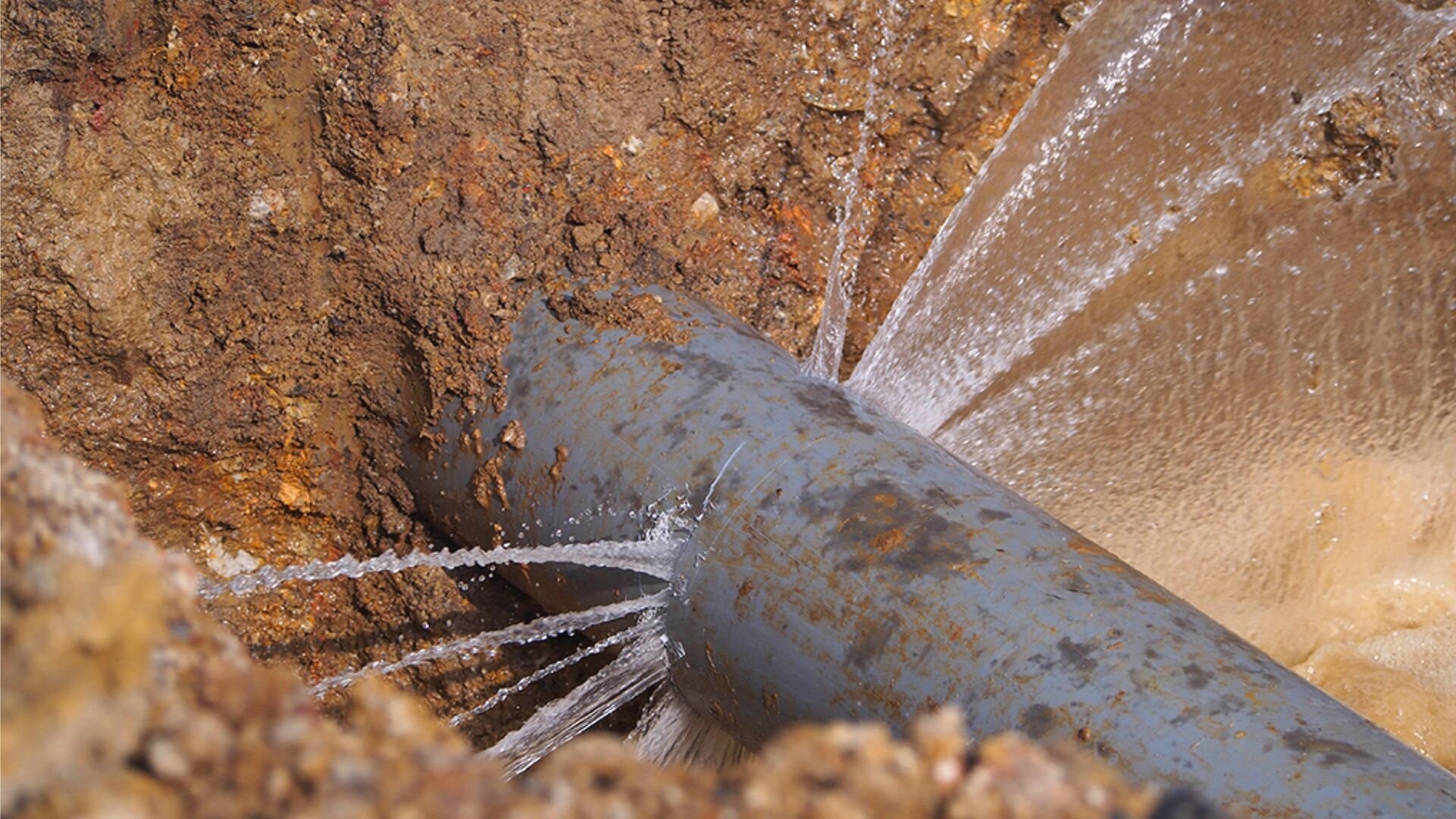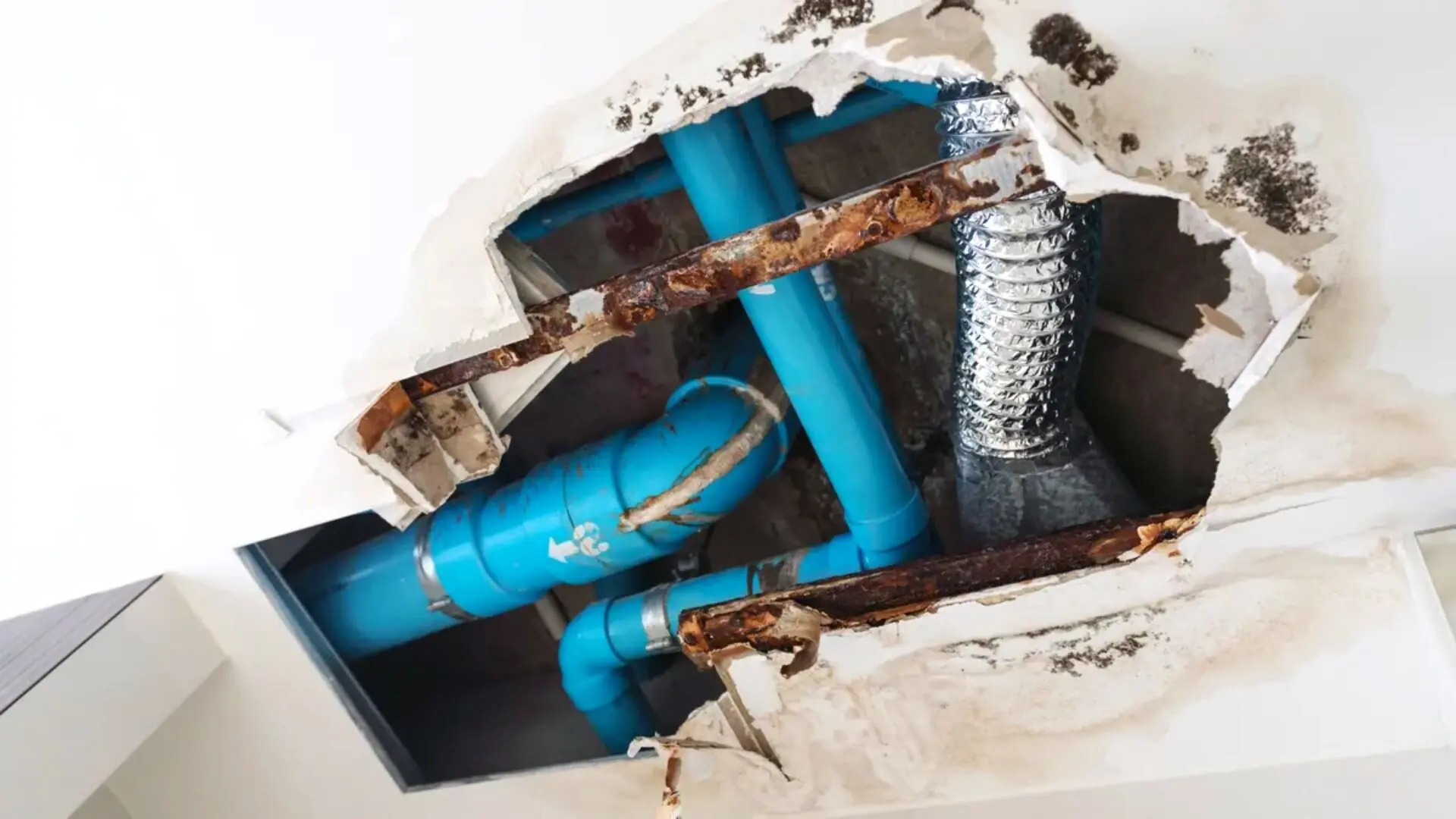Signs of a Burst Pipe: How to Identify and Address the Issue Before It Escalates
Signs of a Burst Pipe: How to Identify and Address the Issue Before It Escalates
Blog Article
Indicators of a Ruptured Pipe: How to Attend To the concern and recognize
Comprehending the indications of a ruptured pipe is necessary for home owners aiming to safeguard their building from considerable water damage. Key signs include water discolorations on ceilings, unusual puddles, and changes in water pressure. Furthermore, the visibility of unpleasant smells or unanticipated spikes in water bills might aim to underlying plumbing concerns. Recognizing these signs and symptoms early can assist in punctual activity, yet recognizing exactly how to properly deal with the circumstance is just as important. The succeeding actions could imply the difference in between a pricey catastrophe and a small trouble.
Water Discolorations on Ceilings

Additionally, the structure of the discolored area might become softer or drooping, recommending that the underlying structure is endangered - burst pipe. It's vital to check out spots closely; if they are gone along with by peeling paint or flaking plaster, this additional indicates ongoing moisture problems that might be connected to a ruptured pipeline

Neglecting these indications can lead to more substantial damage not only to your ceilings yet also to the overall stability of your home. If you observe water discolorations, it is recommended to take prompt action by speaking with a qualified plumbing. Early intervention can prevent additional problems, such as mold growth or structural damage, conserving you money and time in the future.
Inexplicable Water Pools
Unusual water puddles in your house can be a substantial sign of a plumbing concern, especially a burst pipeline. These unanticipated accumulations of water can emerge in different areas, such as under sinks, near devices, or perhaps in basements and creep rooms. Recognizing the source of these puddles is essential, as they can result in extensive water damages and mold development if not addressed without delay.

In some cases, the visibility of standing water might indicate a ruptured pipeline, particularly if it is gone along with by an abrupt decrease in water pressure or a recognizable increase in your water bill. It is important to turn off the main water supply and get in touch with an accredited plumbing professional instantly to examine the scenario and apply necessary repair work if you presume a ruptured pipeline. Timely treatment can stop additional damage and costly repair work.
Unexpected Modifications in Water Stress
An unexpected adjustment in water pressure can be a clear sign of a serious pipes problem, such as a ruptured pipeline. Homeowners may observe this adjustment via rising and falling water circulation, where taps provide water inconsistently-- often weakly, and at other times with extreme force. Such irregularities often stem from a decrease in pressure brought on by a burst pipe, which allows water to escape prior to reaching its designated destination.
In some situations, the pressure may increase significantly due to clogs or limitations in the pipes system. This stress accumulation can intensify existing issues, possibly causing further damage within the pipelines. It is necessary to recognize these adjustments quickly, as they may represent that a ruptured pipeline is impending or has already occurred.
To address sudden modifications read the full info here in water stress, home owners need to first look for noticeable leaks and keep track of the efficiency of their pipes components. It is a good idea to speak with a professional plumber if the trouble continues. They can conduct a thorough examination of the pipes system, identify the origin of the pressure adjustment, and suggest appropriate rehabilitative procedures to stop additional issues.
Unpleasant Odors in Home
Remaining unpleasant smells in the home can indicate underlying pipes concerns, consisting of the opportunity of a burst pipeline. When a pipe ruptureds, it can bring about the accumulation of water in areas that are not quickly visible, producing a breeding ground for mold and mildew and germs. This torpidity typically leads to musty, foul scents that might permeate living rooms.
In addition to mold and mildew, the presence of sewage odors can suggest that a drainpipe line has actually been compromised because of a ruptured pipeline. It poses severe wellness dangers and calls for prompt focus if wastewater leakages right into your home. Home owners should pay attention to the sorts of smells; as an discover this info here example, a rotten egg smell might recommend a gas leak, while a sewage-like smell suggests a much more important plumbing issue.
If you discover any of these unpleasant smells, it's vital to explore further. Inspect locations where pipelines lie, such as basements or crawl areas, for indicators of dampness (burst pipe). If concerns are discovered, getting in touch with a licensed plumbing professional is vital to examine the circumstance and execute required repairs, guaranteeing your home remains odor-free and secure
Boosted Water Bills
An unanticipated spike in water expenses can official statement act as an indication of plumbing concerns, including the possibility for a burst pipe. Homeowners might forget progressive rises, however an abrupt increase in water prices commonly shows a leakage or uncontrollable water circulation. When a pipe bursts, water gets away into locations where it is not implied to be, leading not only to boosted energy costs however additionally to potential home damage.
To determine if a ruptured pipeline is at fault, compare current water bills with historic data. If the boost is disproportionate to your common usage, it necessitates additional examination. In addition, monitoring your water meter can supply understandings; if the meter remains to run while all water sources are switched off, a leak is likely present.
Ignoring elevated water expenses can result in even more significant problems, consisting of pricey repairs and extensive water damages. By remaining watchful concerning your water use and quickly attending to abnormalities, you can secure your home and funds from the effects of a burst pipeline.
Final Thought
In summary, acknowledging the signs of a ruptured pipe is important for mitigating possible water damages. Water spots on ceilings, unusual puddles, unexpected changes in water stress, unpleasant smells, and boosted water costs offer as crucial indications of plumbing concerns.
Trick indicators include water discolorations on ceilings, unusual puddles, and changes in water pressure.In some instances, the existence of standing water might suggest a burst pipe, especially if it is accompanied by an abrupt decrease in water stress or a recognizable boost in your water costs. House owners may neglect steady boosts, yet a sudden surge in water costs commonly suggests a leakage or irrepressible water circulation. Neglecting elevated water bills can result in even more substantial problems, including expensive fixings and considerable water damage. Water discolorations on ceilings, unexplained pools, unexpected modifications in water stress, undesirable smells, and enhanced water costs serve as important indicators of plumbing problems.
Report this page